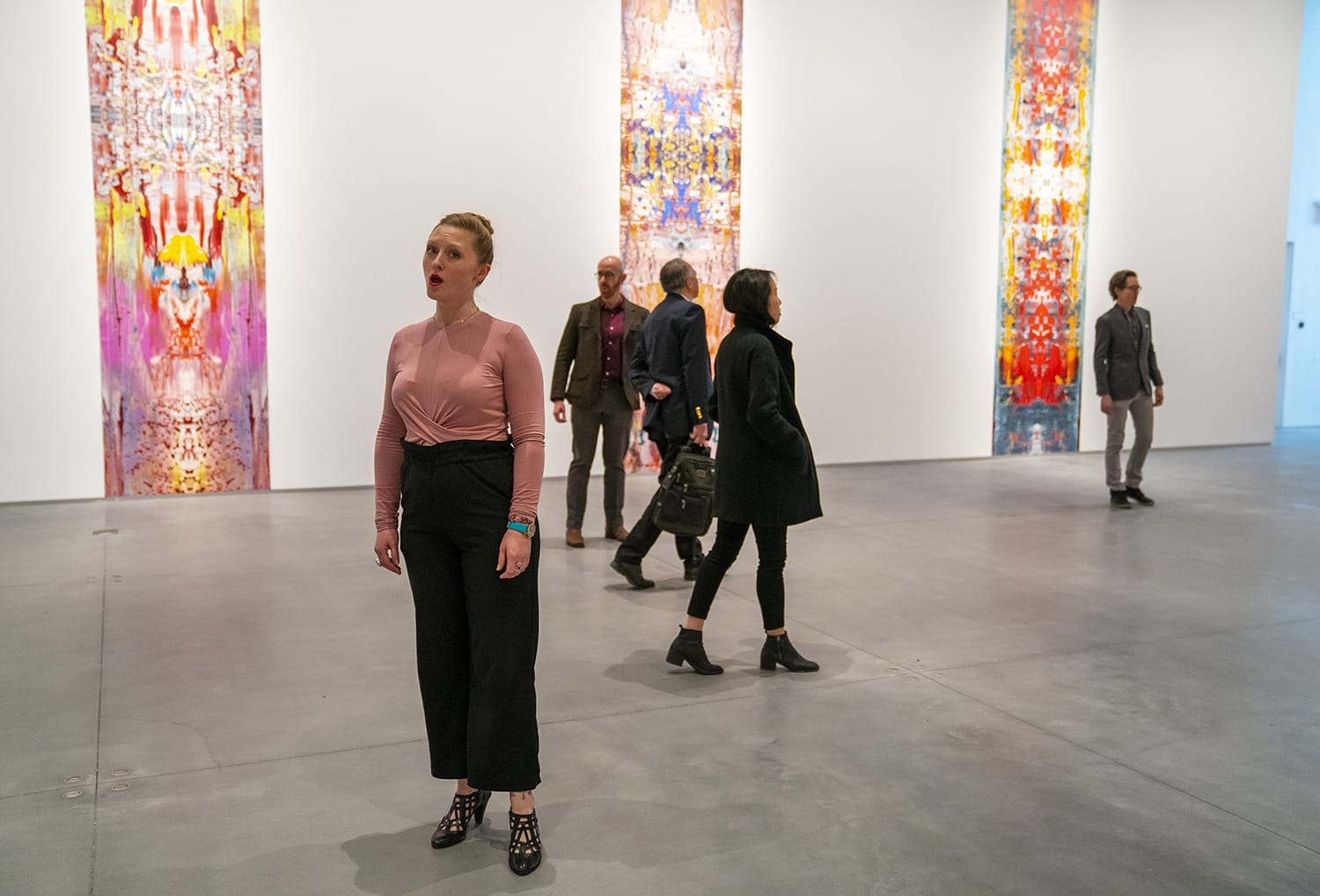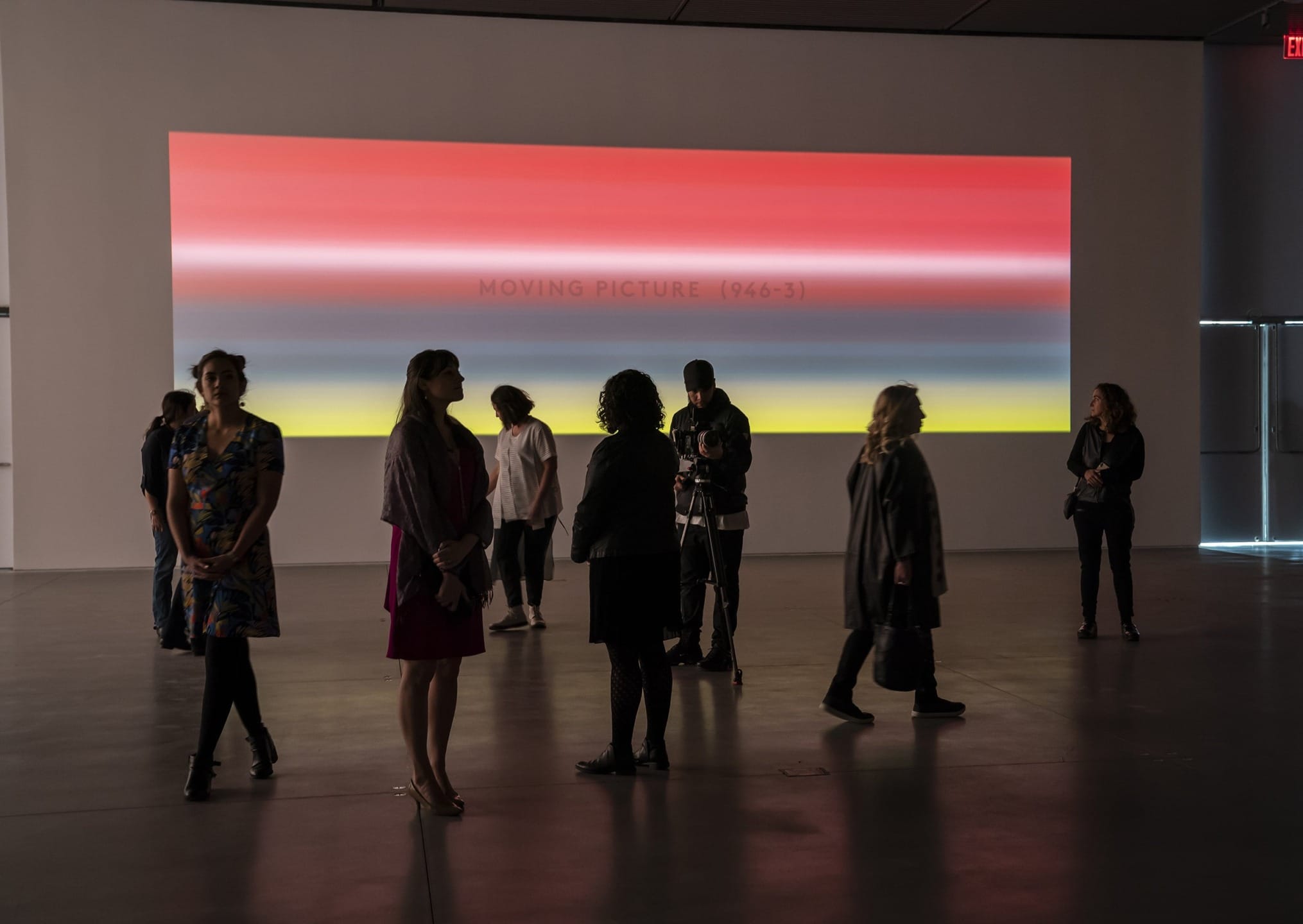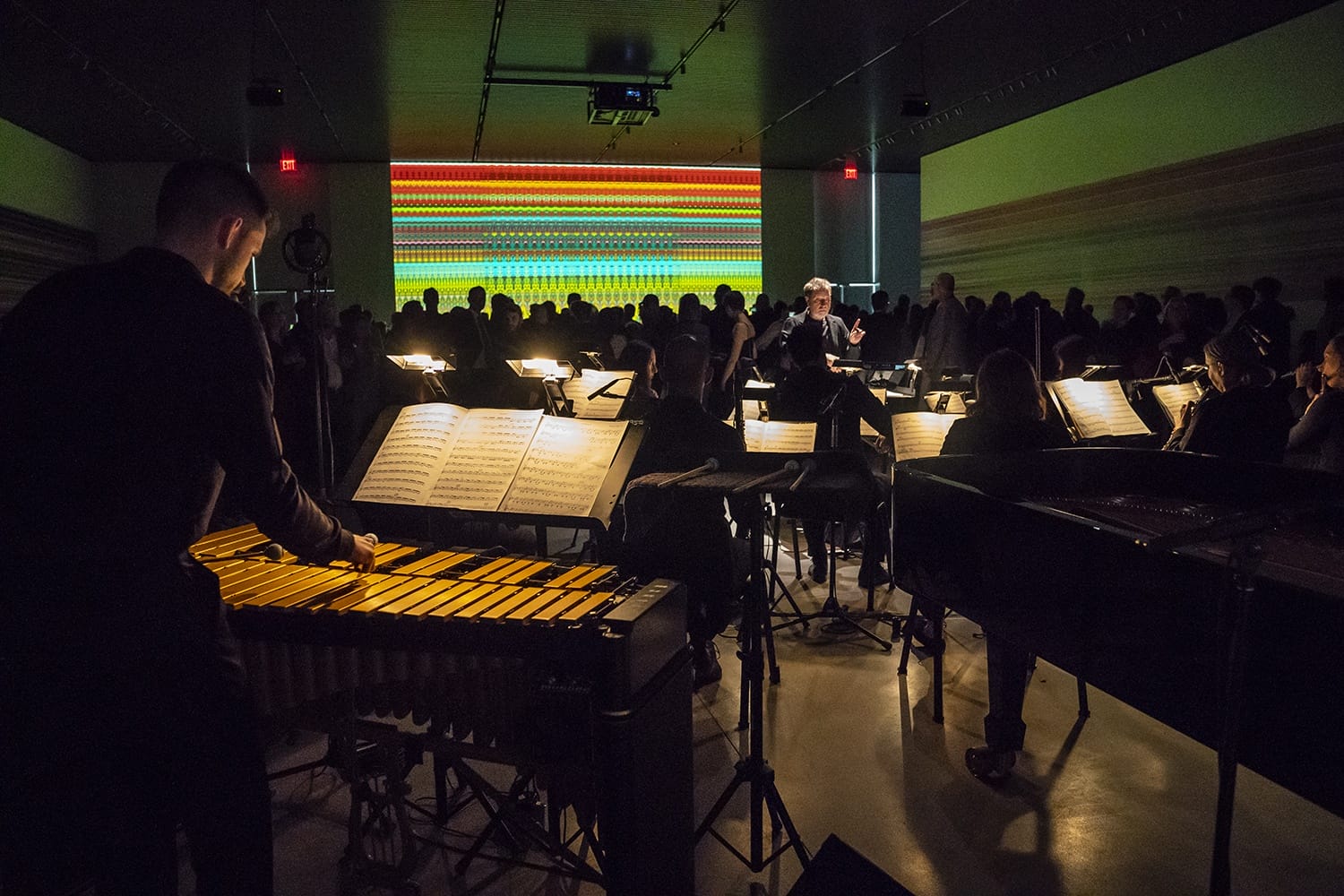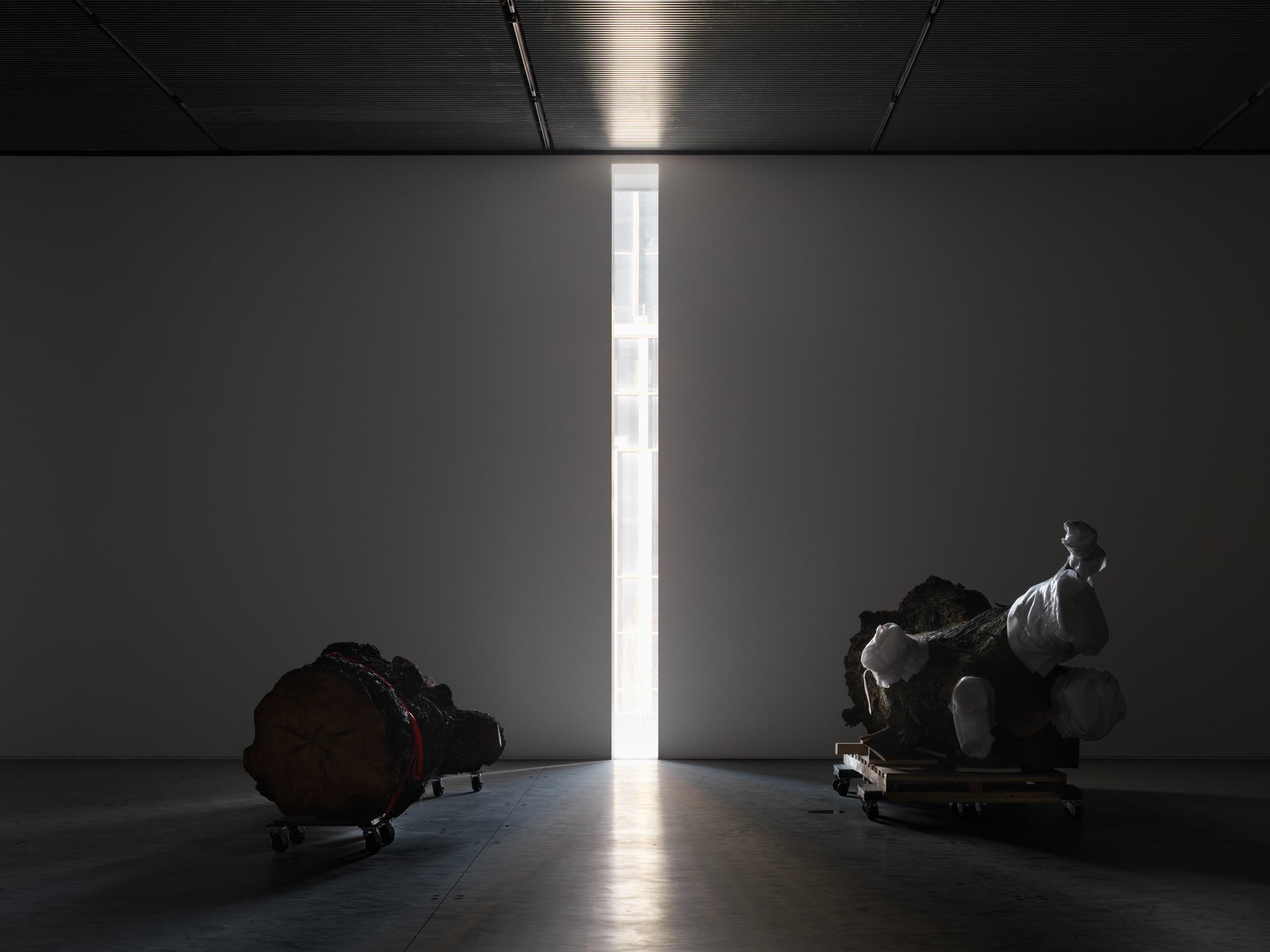A New Collaboration at The Shed Offers a Reflection on the Work of Gerhard Richter
The inaugural programming includes rare works by American composer Steve Reich, German painter Gerhard Richter, and Estonian composer Arvo Pärt

The Shed, a recently opened multidisciplinary venue in the new Hudson Yards development, stages contemporary art, theatrical productions, and musical performances throughout various galleries housed under one roof. Its inaugural programming kicked off last week and includes a rare collaboration between the American composer Steve Reich, German painter Gerhard Richter, and Estonian composer Arvo Pärt.
The collaboration between Richter and Pärt builds on a partnership between the artist and composer that debuted at the Manchester International Festival in 2015. It incorporates new works by Richter, along with Drei Hirtenkinder aus Fátima, a choral composition by Pärt about three shepherd children who see an apparition of the Virgin Mary. The Reich-Richter partnership, which The Shed newly commissioned, explores the connection between Richter’s “Patterns” series and Reich’s repetitive musical structures.
“We want visitors to experience the music and the visual art together during opening hours,” says curator Hans Ulrich Obrist, who is The Shed’s senior program advisor. “It’s both a live concert and an exhibition—a new format.”

All those present for the performance silently pondered what it would be. A little past the scheduled start time, operatic voices rose up from the crowd. In plainclothes, members of the Choir of Trinity Wall Street and/or the Brooklyn Youth Chorus (depending on the day) walked their individual paths through the crowd. The audible expressions in Pärt’s work made Richter’s more complete somehow, the audio and visual unified through the vocalization.
Recommended: Sheila Hicks Transforms The Bass in Miami with a Dazzling New Show
Having performers dressed in plainclothes engage the crowd through song is not new. Jesper Just did it for his Performa 15 commission, in the shadow/of a spectacle/is the view of the crowd; Tino Sehgal’s This Variation at Documenta (13) also featured a similar move; and Allora & Calzadilla engaged crowds that way in In the Midst of Things at the Philadelphia Museum in 2015.
The projected voices flew into the high ceilings. And unlike the paintings, the performers at times made eye contact with visitors and even sang to them.
“When we started to work with Arvo Pärt and Gerhard in Manchester, where this work premiered, we discussed with the artists having the singers move all over the space,” says Obrist. “The interaction is key. Having voices suddenly appearing in an unexpected way next to you is very intimate.”

After the Richter-Pärt interlude, visitors were brought into a parallel gallery featuring a projected animated film by Richter made in collaboration with Corinna Belz. This slow-moving work takes as its starting point Richter’s artist book Patterns for which he split the 1990 painting Abstract Painting (724-4) into two parts, then increasingly smaller parts, repeating and reflecting those segments to create kaleidoscopic patterns. The film does the same but in reverse, creating a vibrating grid of colorful lines that morph before your eyes. A live orchestra performed a unique score by Reich made specifically for this digital rendition of Richter’s work.
“In 2009, [Richter] asked me to play my piece Drumming with the Ensemble Modern at the Ludwig Museum in Cologne and then I played Music for 18 Musicians with the Cologne Philharmonic,” says Reich of his first meeting Richter. “We met and shared mutual admiration. Cut to 2016, I got a note stating, ‘Richter would like to meet you at Marian Goodman gallery,’ where he shows, and discuss a new project. Here it is.”
Of those sitting on the provided fabric stools, 95 percent watched the animated screen as the live orchestra shifted gradually from melodic playing to frenetic—the music getting more impassioned as the notes got sharper and the screen’s flat lines began to form into arabesques and larger patterns. Then the screen moved back to featuring the slim horizontal stripes it had begun with. All of the colors vibrated before going black at the very last note. It brought to mind Richter, who, born in 1932, is in the later stages of his life. The piece felt like an elegy.

“It’s always a wonderful experience to work with Gerhard Richter,” says Obrist, who has known the artist since 1986. “He continues to invent and with the Pattern works ventures into the realm of digital image-making, giving the world so much hope. He said once, ‘Painting is the highest form of hope.’”
Recommended: Discover the Highlights from Art Cologne 2019
Also on view at The Shed is a commissioned installation by visual artist Trisha Donnelly, No Title (2018), organized by senior curator Emma Enderby, comprising two large tree trunks and a pile of branches in the far corner. Lit only by a small opening in a wall, the work is shown in near darkness. A recorded audio component (featuring opera) is projected through two unassuming black speakers.

The installation is underwhelming. But the view hidden behind a freestanding wall—of the Vessel glimmering in the sun with light refracting off its polished metallic surfaces—contrasts with the dim interior and natural wood. And maybe that distinction from its surroundings is the point. Nonetheless, Donnelly’s installation is weighty but also missing something.